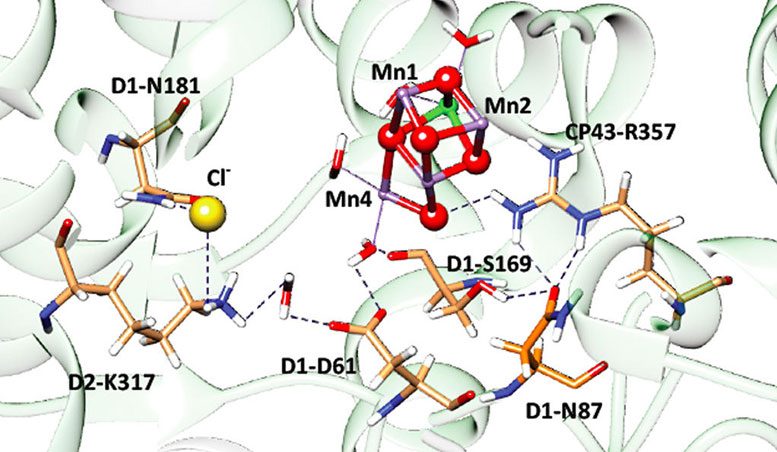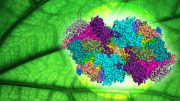
The structure of the O2-evolving complex (OEC) is shown here, depicting the hydrogen bonding network in cyanobacteria.
Researchers at Yale and the University of California-Riverside recently identified a key similarity in the way water oxidation occurs in green plants and bacteria during photosynthesis.
The researchers, who published their findings in the Journal of Biological Chemistry included Yale’s Benjamin Silliman Professor of Chemistry Gary Brudvig and graduate students Gourab Banerjee and Ipsita Ghosh.
The team explained the one significant difference in the amino acids surrounding the active site for water oxidation between cyanobacteria and green plants such as spinach. The high conservation occurs despite the fact that, in evolutionary terms, green plants and cyanobacteria diverged roughly one billion years ago.
Reference: “Substitution of the D1-Asn87 site in photosystem II of cyanobacteria mimics the chloride-binding characteristics of spinach photosystem II” by Gourab Banerjee, Ipsita Ghosh, Christopher J. Kim, Richard J. Debus and Gary W. Brudvig, February 2018, The Journal of Biological Chemistry.
DOI: 10.1074/jbc.M117.813170
Brudvig chairs the Department of Chemistry and is director of the Yale Energy Sciences Institute.









Be the first to comment on "Biochemists Identify Key Similarity in the Way Water Oxidation Occurs in Plants and Bacteria"